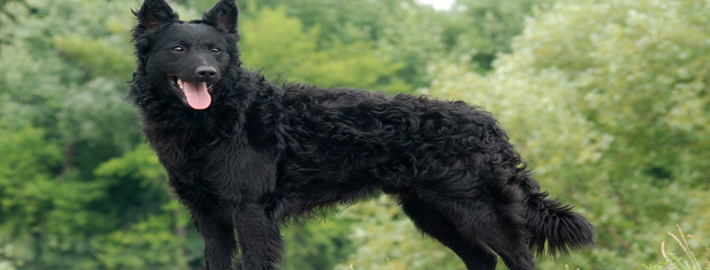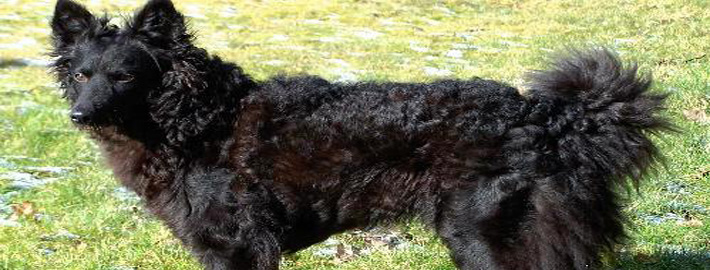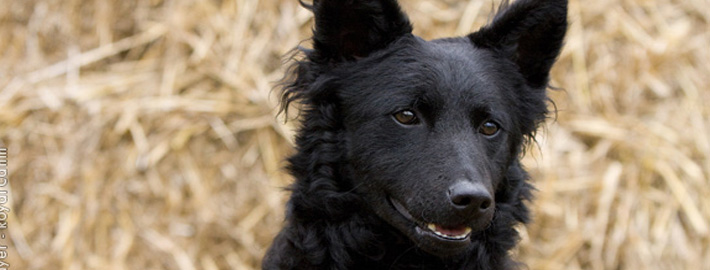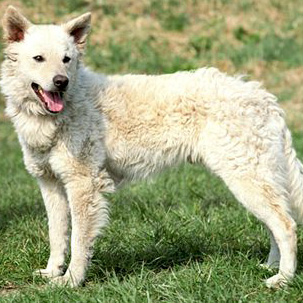What makes the Mudi Unique?
Members of this breed make excellent multi purpose farm dogs and, for that reason, they can be found in a variety of locations around the globe.
Breed Groups
Page Contents
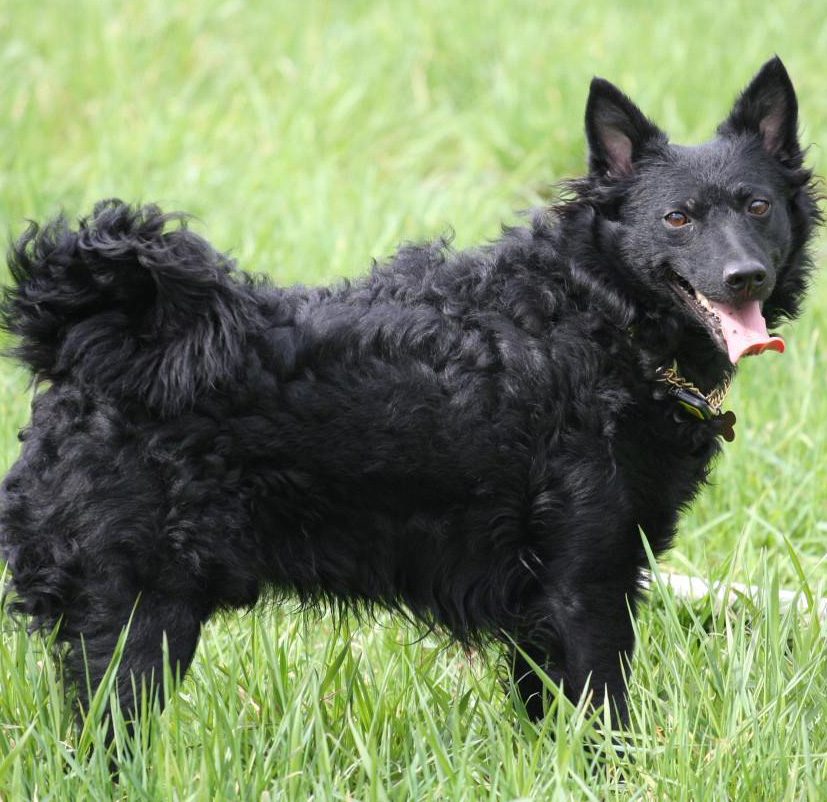
Is the Mudi Right For You?
The Mudis are very brave individuals that do not fear much, including other dogs. While Mudis are usually wary of unfamiliar people, around people they know allows their affectionate natures come out. These dogs make excellent companions and they tend to bond strongly with one person. However, members of this breed that have been raised around children and other animals tend to be quite tolerant of them.
In 5 Words
- Intelligent
- Energetic
- Alert
- Lively
- Keen
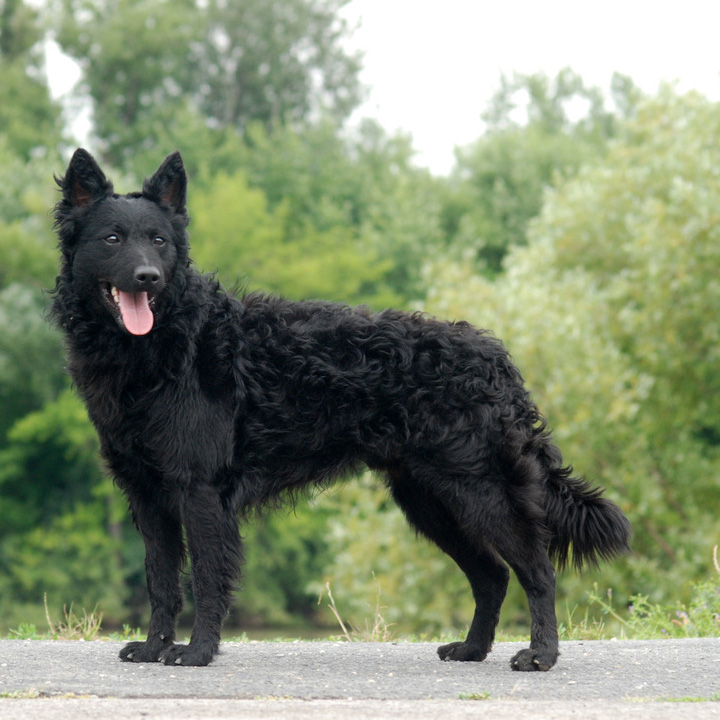
Characteristics
Learn About the Mudi
Description
General Description
Mudis are medium sized dogs with slightly sloped, elongated backs and deep chests. Their back legs are typically spaced far apart. These dogs also have pointy noses, triangular muzzles, rounded heads, and muscular jaws. The teeth on members of this breed should meet in a scissors bite. Oval shaped, dark brown eyes are another breed feature. These dogs have erect ears that are folded at the tips. It is not uncommon for members of this breed to be born tailless.
Size
It is typical for a Mudi to stand between 15 and 19 inches (38 and 48 centimeters) tall. These dogs likewise weigh between 18 and 29 pounds (8 to 13 kilograms) on average. Female Mudis are generally about about 7.5 inches (3 centimeters) shorter and 5.5 pounds (2.5 kilograms) lighter than their male contemporaries.
Coat
Members of this breed have thick coats that range from wavy to curly in texture. Their fur is only about 2 inches long (5 centimeters) in most places and is subsequently easy to manage. However, the dogs do have shorter hair on their muzzles and longer hair on the back of their front legs.
According to the FCI, acceptable coat colors for members of this breed include fawn, blue-grey, black, brown, and blue-merle. White markings are permitted on a dog’s chest and also on their toes, but the latter quality is not considered a desirable characteristic. Meanwhile, the AKC recognizes Mudi dog that are black, brown, grey, grey-brown, yellow, or white. Individuals with merle markings are also permitted.
Short History of the Mudi
Although the origins of the Mudi breed are shrouded in mystery, many different human cultures and their favorite dog varieties found their way to Hungary over the course of history. Naturally, some the canines brought through the country may have contributed at some point to the three herding breeds that are currently found there. Size is the only clear difference found in the old records of Hungarian dog types, so it is impossible to state with any certainty which of the modern varieties is being referenced in the documents and paintings that remain.
For example, there are historical papers dating back to the 14th century that describe a Croatian breed which strongly resembled a Mudi. Other records from around the 17th century mention the existence of Mudi-like dogs but reference them as being part of the ‘Puli’ breed. It is thought by some dog fanciers that the Mudi and Pumi breeds may even be descendants of the Puli variety. After all, Pulis do often give birth to pups that resemble Mudis but the opposite is not the case at all.
Additional sources have also suggested that the Mudi variety could possibly be a cross between the Pumis and the Pulis. However, the Fédération Cynologique Internationale (FCI) standards do concede that the Mudis probably have “various prick eared German herding breeds” in their blood lines. It’s obviously a guessing game as to what the real story might be.
What is known for certain is that the Puli, the Pumi, and the Mudi dog varieties all eventually emerged in the region that is now Hungary. These creatures began to take prominence in their homeland during the latter part of the 19th century when dog breeds were becoming standardized throughout the world. Mudis were originally known as ‘Driver Dogs’ in honor of their herding abilities but later the name was changed by a gentleman who had done a lot of work to promote them. By the l960s a breed standard was written so that the dogs could become part of the FCI, an event which took place in 1963. Mudis have since been recognized by the American Kennel Club (AKC) as part of their herding group.
Temperament
Mudis evolved from their shadowy origins to become farm dogs that were capable of performing a variety of necessary tasks. These dogs are skilled hunters and livestock managers. They also are adroit at guarding their homes and the people that live there. Members of this breed make excellent watchdogs. Although Mudis are well-known for their highly vocal natures, the habit can effectively be controlled with proper training.
Members of this breed are very brave individuals that do not fear much, including other dogs. While Mudis are usually wary of unfamiliar people, around people they know allows their affectionate natures come out. These dogs make excellent companions and they tend to bond strongly with one person. However, members of this breed that have been raised around children and other animals tend to be quite tolerant of them.
Caring for Your Mudi
General Health
This is a fairly healthy breed and most individuals live for more than 13 years. However, cases of hip dysplasia have been reported from time to time.
Care
Daily
These high energy dogs need plenty of mental stimulation and physical activity to be at their best. At least one briskly paced walk is recommended per day. However, these dogs greatly benefit from having a place where they can safely run around. Given their history as a working breed, Mudis thrive where there is a job for them to do but many will just as happily participate in dog sports.
Weekly
All pets should have their teeth brushed on a regular basis to prevent them from falling prey to otherwise avoidable illnesses.
Monthly
Heartworm, flea, and tick prevention medication is typically administered on a monthly basis as these products help reduce the risk of parasites in pets.
Grooming & Bathing
These dogs do not have extensive grooming requirements. All they need is an occasional brushing to keep them looking neat and tidy. Mudis do shed a modest amount of fur from time to time but the aforementioned grooming sessions should be enough to keep their households free of dog fluff.
Exercise & Training
It goes without saying that these brilliant dogs are fast learners but some individuals may nonetheless have difficulty with toilet training. Like most intelligent breeds, Mudis tend to be independent thinkers. This characteristic is generally regarded as an asset because it allows these dogs to successfully manage livestock without human intervention. However, this trait can also cause these individuals to be quite stubborn at times.Owners will need to take a fair and consistent approach to training in order to be successful with members of this breed. Of course, it never hurts to hand out treats as learning incentives as long as one is careful not to overdo the goodies.

